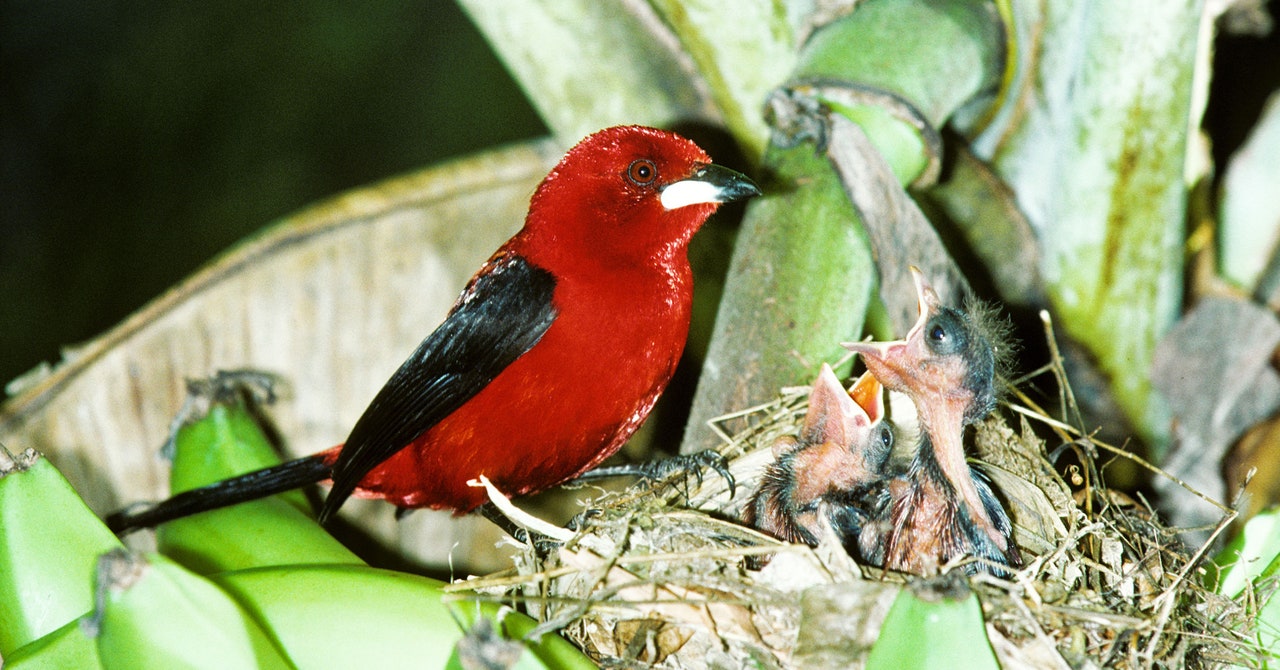
In some ways, having the excess energy required to develop and maintain those feathers could actually turn out to be an honest signal. It takes protein to build them, and the bird needs to produce oils to keep them in good shape. They require constant pruning, too. So if it turns out that parasites attach more easily to these microstructures, that might mean a male would need to spend even more energy grooming himself. “The fact that you have that time, and you have those oils, and you had the feather in the first place—those might all be honest signals,” says Dumbacher. Basically: Not only am I as dapper as I claim in my dating profile, but I’m also free of parasites. Which, swoon.
But why go through all the trouble of evolving elaborate feather microstructures when males already have the pigmentation to signal to females? Well, that’s the literal beauty of evolution. “Evolution is pretty remarkable,” says Shultz. “Males will probably find a way to evolve a means to get around the signal to make themselves look more bright, more elaborate, or fancier, without necessarily putting in the same cost. And so those males are going to get more mates, they’re going to be healthier, so they’re probably going to have more offspring. And so then through natural selection, that’s going to be that trait is going to take over.”
In other words, female tanagers don’t want no scrubs. If a brightly colored male is most likely to be the healthiest, evolutionarily speaking, she wants to give those genes to her own sons. If her sons don’t pop, they don’t reproduce, while someone else’s flashier kids continue their own genetic line. It’s a sort of evolutionary arms race. Females want the fittest males, but males try to game the system. Instead of spending time and energy stuffing himself with more carotenoids from fruits, the male can “cheat” using the microstructures in his feathers. Shultz and her colleagues call this the “proxy treadmill,” in which males develop tricks to signal fitness without necessarily being more fit.
“There’s this treadmill of these proxies that are constantly changing,” says Shultz. “Males and females are in this war over males trying to make themselves look as best they can while putting in the least amount of resources, whereas females want to use traits that are going to actually be indicative of a male’s underlying quality.” A female can’t just abandon her preference for flashier males, because that would doom her sons to being unattractive.
It’s possible that this preference for flashy males first began to evolve in tanagers because they already seek bright colors when searching for food: These clue birds into the presence of yummy fruits. “If a male has a really bright red, and females are already turning their head to that color, then it’s going to give him an edge,” says Dumbacher. “Vertebrates do evolve an aesthetic sense. There’s different reasons that females might prefer something. And as long as there isn’t a huge cost to liking that, it can evolve just because the females like it.”
Evolutionary biologists call it a “swipe right.” Or at least they should.
More Great WIRED Stories


